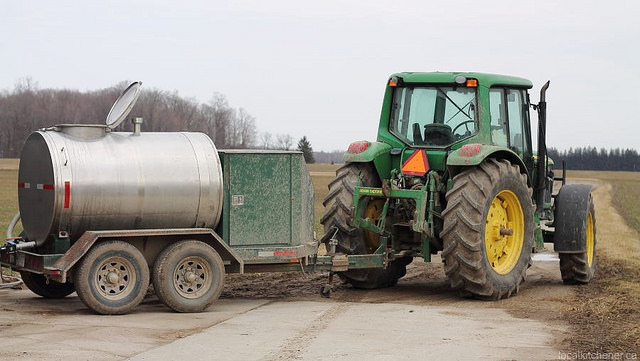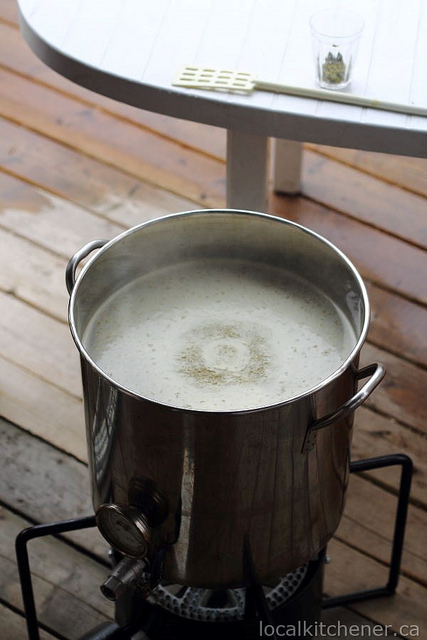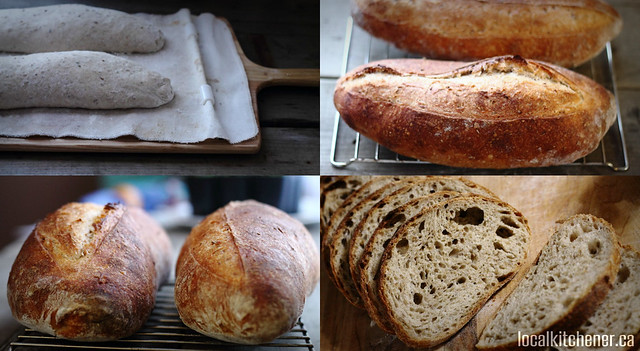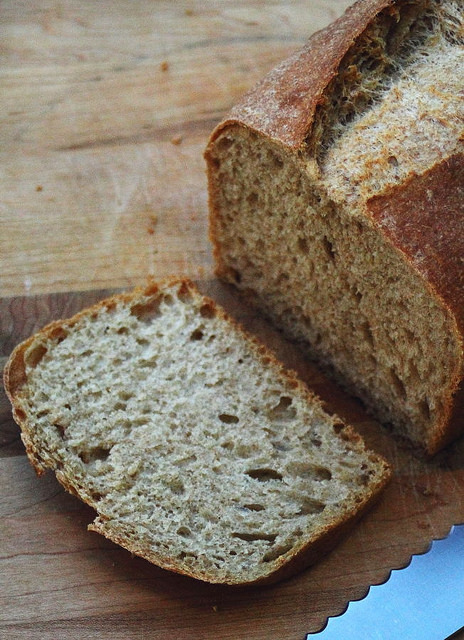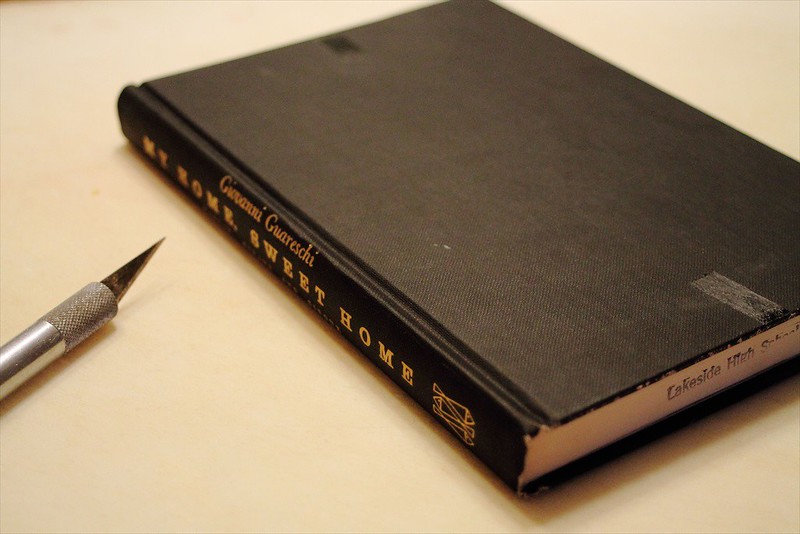(It’s of course also available online but you should really buy it from your local book seller, if you care about the future of books and publishing and do not want them to be destroyed by the Amazonian beast’s every widely-reaching tentacles that would like to crush and devour all local businesses and become the one-and-only purveyor of all consumer goods, which in this case here in KW means a place like Words Worth Books.)
Anyways! Although Farmacology came out in 2013 it has remained popular at our local library so when I finally got a copy a month later I could only keep it for three weeks. Luckily since I was so enthusiastic about the book I was able to get my own copy from the publishers along with two copies to send out as giveaways, boo-yah! It turns out that this is my first time giving something away on this blog that is not just for local readers and is not homemade by me.
More importantly though, I wouldn’t host a giveaway for something that I wasn’t totally excited about, and this book is just that kind of something! So enough about the giveaway, and on to the book.
Several years ago, family doctor Daphne Miller decided to embark on a journey to visit innovative family farms to explore what sustainable agriculture can teach us about health and our bodies. Her journey took her to a wide variety of farms with their respective farmers, and each helped her to see a different aspect of health and healing.
The book has already been widely and positively reviewed by influential food and health writers, including Michael Pollan, Marion Nestle, and Alice Waters, and it’s worth checking out a few of those reviews. Thus, rather than walk you through the whole book in summary form, I would like to share with you a few of the things that have influenced me since reading the book. A few of these I was already in favor of but now have more support for, and others are brand new!
- Don’t Wash All Your Veggies
More and more people are talking and writing about probiotic bacteria and their importance in our lives these days, and the discussion often involves fermented foods. However, we can also get some good members of the microbiota from our local environment straight from the soil. The easiest way to do this is by NOT thoroughly washing all of our veggies.
I have been incorporating this into my diet lately by only lightly washing the veggies from my garden. When thinning carrots and other root vegetables I’m even making sure to eat a few of them right after picking them, after just rubbing off some of the dirt. This has meant a few mouthfuls of grittiness, but I’ve also enjoyed the absurdly fresh bites!
- Buy The Ugly Veggies
For the last 100 years or so farmers have been selecting and breeding vegetables and fruits mainly based on appearance. This is because consumers have demanded produce that looks perfect and can withstand massive amounts of transport.
Sadly appearance is pretty much the worst indicator of health and flavor when it comes to fruits and veggies. In previous generations seeds were selected from the fruits and vegetables that had the best flavor, as well as from plants that had the most vigor and ability to survive and thrive.
It turns out that flavor is an important indicator of nutritional content. Furthermore, plants that have gone through some hardship actually produce more nutritional compounds which are found in their fruit.
The problem is that grocers and markets reject produce that has too many blemishes. Ironically these are likely the ones that have the most flavor and nutrition! Luckily, in some cases these fruits and vegetables can be purchased as “seconds” or “#2’s.” What’s awesome about these seconds is that they are not only healthier but also cheaper!
- What’s Good for Animals is Good For Us
In recent years there has been much more awareness about the horrific conditions within factory farms. Not only are these conditions unethical simply regarding the treatment of animals, but they also create environmental problems. Furthermore, the meat, dairy, and eggs produced in factory farms is not good very healthy. This is one reason that my family has started getting eggs from our CSA that are not only free range but also pastured. Access to pasture ensures that the chickens are healthy and happy (this is actually research-based) and that their eggs have much better for us.
However, what was cool about this chapter of the book was that Dr. Daphne explores the parallels between stress for animals and humans. It turns out that the same things that help chickens to be healthier and happier are true for humans!
It may seem intuitive, but access to the outdoors, and not being “cooped up” all the time inside will help us to have less stress in our lives, and lead healthier lives. This is one more reason for us to shoo the young assistants out the door every day and encourage them to dig in the dirt.
- Garden in the Front Yard
In a chapter focused on gardening Dr. Daphne explores the health benefits for whole communities when gardens are public and visible. My family has always done some (or all) of our gardening in the front yard and we were quickly made aware of how this would become a talking point with many of our neighbors (or in some cases something that was discussed without us present). Sometimes the reaction has been skepticism (that was more an issue in Atlanta than here in Kitchener), but mostly it’s a positive reaction.
What we weren’t aware of was the fact that community gardening can actually have trickle-down health effects within a community, affecting even individuals who aren’t involved in the gardening. For example, children who participate in gardening at school end up influencing their parents to eat healthier. And neighbors of people who garden also end up eating more fresh vegetables and fruits.
After reading this chapter I’m more inspired than ever to continue ripping up the front yard and boulevard and filling in the space with delicious and healthy edibles!
- Use Plants for Skin Care
Lately I’ve been kind of annoyed with the endless talk on homesteading blogs about essential oils. Part of my annoyance stems from the fact that all the people talking about the amazing benefits of these oils are also trying to convince their readers to buy them. There’s really nothing wrong with selling a product, and I should be happy that the products are all-natural, and good for health. Maybe my other problem with it though has more to do with my own skepticism about the benefits of oils.
However, I am a little more open to essential oils, plant-based health products, and skincare after reading about Dr. Daphne’s own experience with a funny discoloration on her face. Her own personal health journey that begins with a lightening cream and ends with an atomizer. In the end through trial and error she finds that what works best for her skin (and doesn’t destroy it like the chemicals she begins with) is a simple mist of distilled rose geranium, in the form of a hydrosol.
Part of the reason that plants are a better source of health and beauty products is somewhat of a mystery. Researchers often think they’ve found a compound that is responsible for some cure or health fix but when it’s used in isolation it no longer works. The health effects particular compounds from plants often only work when they are accompanied by all the other individual components of the plant.
Since reading this chapter I’ve felt inspired to begin learning more about herbs and plant-based healing, and to start making hydrosols. I’m going to see what I can put together based initially on designs like this one from Mama Rosemary.
So, that is just a little bit of what I’ve learned from this book but it’s not really why I enjoyed reading it. Dr. Daphne is a great writer and teacher, and this comes through in the book. It’s an easy read yet full of tons of awesome and interesting information. Rather than being preachy, the tone of the book is humility, humor, and open-mindedness. The reader is left feeling inspired without feeling criticized. I can’t wait for you to read it and tell me what you think!
The giveaway is thanks to the folks at Harper Collins and I’m grateful to them! I was not compensated with $ for this review but I received a copy of the book in addition to the giveaway copies. I plan to pass that copy along to friends and family (first dibbs anyone?). The giveaway is open to anyone in the US and Canada, and there will be a winner in both countries.
“Amber and malty,” I thought to myself as visions, aromas, and flavors of a Wee Heavy clouded my mind.
Lately this has been the style of beer that most appeals to me. It’s funny because for a long time—isn’t this true for most craft beer lovers—all I would buy was IPAs, the stronger, hoppier, more bitter, the better.
That changed when we were in Michigan a couple years ago and bought a 6-pack of Founder’s Dirty Bastard, a “Wee Heavy” Scotch Ale. It’s rare for Madame and I to both love the same beer, but this is one of them.
What Makes a Wee Heavy?
Wee Heavy Scotch Ales are characterized by copper to brown colors, with hints of amber or ruby, malty sweetness, and complex flavors of caramel, toffee, vanilla, cherry, and oak, with minimal bitterness, and typically no flavor or aroma from the hops. They are wonderful in the winter for the warmth given by the high alcohol content (7-11%), but really any time of year is a good time to enjoy this ale.
Jamil Zainasheff, who writes for Brew Your Own Magazine says this of Wee Heavy Ales:
A good wee heavy is sweet, but not cloying, has a complex malt character, and has a warming, yet not harsh, alcohol presence.
What’s not to like when you read that description? He goes on to talk about how most homebrewers seem to end up chasing the ultimate, extremely bitter and hoppy IPA or the wee heavy, which is “kind of like the IPA of the malty world.” I guess I fall into that malty camp these days. Not that I don’t enjoy IPAs, but I find them to be so much more costly because of the absurd amounts of hops that must be employed, and more difficult to execute perfectly without a kegging setup in which to dry hop.
Making a delicious wee heavy on the other hand is not much more costly than a more standard ale, because while it uses quite a bit more malt, is quite light on the hop side of things. When I look at the breakdown of my ingredient costs for a 5 gallon batch of the standard Spee Keasy K-Wee Heavy it’s around $22-25, assuming most malts are purchased in bulk. Another pro is that they bottle-condition quite nicely, with a great shelf life.
The Spee Keasy has brewed two Scotch Ales so far, but none like this one. And sadly this one won’t be replicable for another year; our brewing liquor was not water, but sugar maple sap.
Working Towards Terroir…
It was the procurement of about 7 gallons of sap that had gotten me thinking of a delicious, malty, amber Scotch Ale. I had done a bit of research to find recipes for maple sap beer, and was rather disappointed with them until finding this article.
Although I was still unimpressed with the lack of a decent recipe, the article itself was a very enjoyable and informative read. The best piece of information I got from it was the mineral breakdown of maple sap.
This was essential in helping me choose the appropriate style of beer to brew with the sap. It seems that softer waters are better for maltier beers. The sap is quite soft, in spite of the sugar in it, it has very low mineral content. Thus I arrived at the “amber and malty” description on Brewer’s Friend.
For some reason most maple syrup beers tend to be brown ales and porters. Ah, but this isn’t a maple syrup beer, it’s a sap beer. Tasting like maple syrup is not actually the goal of this beer. The goal is terroir. I want a beer that is rooted—pun intended—in Ontario. So we shall see just what that tastes like!
- 14 lb 2-row
- 1.25 lb Victory
- 8 oz Flaked Barley – Local
- 8 oz Caramel 40
- 6 oz Smoked Malt
- 3.5 oz Roasted Barley
- 1 lb Maple Syrup, Grade B – added after primary fermentation
- 7-8 gallons raw maple sap
- 1.2 oz Nugget hops
- Wyeast Scottish Ale 1728 (from another bottle of our K-Wee Heavy)
- Safale S-04 (just in case the yeast dregs didn’t work out)
- Dough in with 21.25 quarts of sap at 170, and a target temp of 155-6. Hold for one hour, then add 8 quarts boiling sap to mash out at 170.
- Sparge with the remaining sap at 170, adding enough water to the sap to ensure you have around 4 gallons of sparge water. Collect 6.5 gallons of wort.
- Boil for 30 minutes before adding the bittering hops, then 45 minutes more. With 15 minutes remaining add a ½ teaspoon of Irish moss and yeast nutrient.
- Knockout and chill to 65. Pitch yeast and allow to rise to 70 as it ferments. Rack after primary fermentation is complete, adding 1 pound of maple syrup.
- Optional – add 1 ounce oak chips that have soaked in Canadian Whiskey.
Oh, and the best part of all this for local readers is I’m going to give away a 750 ml bottle in a couple months when this beer is ready!
As much as I enjoyed my job teaching I was eager for a chance to be home with my boys and have more time to develop some of my favorite hobbies, like cooking and gardening. I even added all sorts of new hobbies, the one that has absorbed most of my passion being homebrewing beer.
I have had a hard time pinning down just what I want this blog to be but have always focused on my main objective which is eating local food and making meal plans. If you browse through the site you’ll find meal plans for all times of the year, always emphasizing locally grown foods. That means that if you live in the Region of Waterloo, or Southern Ontario, or really most parts of North America you can follow along and hope to find most of the local foods that I’m using at roughly the same time of year.
Since moving the site from localkitchener.wordpress.com over here to localkitchener.ca I’ve been thinking a bit more about what I want to focus on. I will continue posting our meal plans anytime we make one, which should be almost every week, and will share locavore tips and skills as seems relevant.
In honor of the new site and the new year I’m giving away a homemade book that you can use for whatever you want! Maybe it would be a good place to put meal plans. Or keep track of kitchen experiments (which is what I use mine for). Or just as a journal. Or give it to a friend as a gift. Or do something else, once it’s yours you decide what to do with it!
The catch: because I believe whole-heartedly in local living I’m not sending this book anywhere. What??? Yeah, sorry, the contest is open to all but if you don’t live in Kitchener/Waterloo then you will need to be willing to come visit our awesome cities and meet me at a local cafe or restaurant sometime to claim your prize! Ultimately I’m more interested in local community than in giving away free items to people across the continent. I think I will continue local giveaways like this in the future as I make new items like homebrew (coming soon), soap (which I plan to do next month once I catch a demo at the KPL!), bread, and anything else that seems like it would make a nice gift….
If you live in this area and want to boost your chances of winning the book you can enter more ways than one! And check out the photos of how the book was made if you want to make your own. The video I followed is also included below and is an excellent resource.
a Rafflecopter giveaway





